

Elijah Randolph Billingsley was born in Knoxville, Tennessee, on November 20, 1806, to Jeptha and Miriam Randolph Billingsley. Elijah’s family were pioneers who spent their lives moving from one newly settled district to another. His first move was to Rutherford County, located in the geographic center of Tennessee, where they lived from about 1808 to 1810. Rutherford County was created in 1803 when new settlers complained that the nearest county seats were too far away and there were no roads anyway. Next the Billingsleys moved to Warren County, east of Rutherford a couple of counties. Around 1817, when Elijah was about 11, the family moved with some of their relatives to Cooper County, Missouri, settled in 1810—Daniel Boone used to hunt near the salt springs there. They spent about ten years in Missouri and then moved to Gibson County in western Tennessee around 1827. Davy Crockett, who blazed his trail here just five years prior, lived about eight miles from the Billingsleys. Elijah married Emeline Lovina Northcott in Gibson County on February 21, 1828. Emeline was born December 7, 1806, less than three weeks after Elijah, a daughter of John and Ruhamah Tucker Northcott, in Rutherford County. Elijah and Emeline were 21 when they married.1
The Billingsleys lived until at least 1835 in West Trenton Township in Gibson County. They had four children while here: Miriam Jane (31 Jan. 1829), William Barton Campbell (8 Jan. 1831), Tabitha Lovina (6 Nov. 1832), and James Turner (11 Dec. 1834). Elijah’s uncle, also named Elijah Billingsley, also lived in the county, so it is difficult to tell which is which in the county records. One or both of them bought and sold land, served on juries, and did duty on road crews. One of the Elijahs was made a justice of the peace in Trenton on December 3, 1827, and after that is referred to as “Esquire.” It seems more likely that the older Elijah was the judge, since he was 41 and our Elijah was just 21. Either way, we know that the younger Elijah developed an interest in the law.2
In about 1835 Elijah and Emeline moved to Pontotoc County, Mississippi. This was also new country, opened to settlement in 1832, made a county in 1836. Elijah and Emeline had four more children here: Joanna Artina (5 May 1837), Archibald Huston (4 Oct. 1839), Margaret Josephine (22 Sep. 1841), and Martha Isabell (13 Jan. 1844). Pontotoc County grows cotton, which in the South usually meant slave labor, and there is a tradition in the family that Elijah owned a plantation and slaves. After looking at tax and census records for most years between 1824 and 1845, I’ve concluded Elijah most likely never owned slaves or much if any land, though his father Jeptha had both.3 Maud Bliss Allen, writing of daughter Miriam’s girlhood, records memories of life on Elijah’s “plantation”—perhaps this was in reality Jeptha’s farm: “The old faithful Negro slave, a favorite in the Billingsley family, used to get his old violin [and] take [Miriam] out to the rear of the home and teach her to sing and dance, while he would play the old Southern melodies on his fiddle. [Elijah] was very stern on the subject of dancing and while she was learning those fancy steps and dancing as fast as her feet could step, the old slave would say, ‘Keep a goin’ Miss, keep a goin’—your old friend won’t let anybody get yah.’ He enjoyed teaching the old Southern songs and with her lovely voice she would sing them thru and thru. . . . In the kitchen the old Southern mammy who did the cooking would stand her on a high box and teach her to cook. From her she learned to make the good old fashioned molasses cookies and cakes and many of the old Southern dishes famous everywhere. . . . While living in Mississippi near the Indians [Miriam] learned to talk the Chickasaw language and always delighted in counting to one hundred.”4
In November 1843 Elijah Billingsley ran for probate judge (responsible for wills and inheritance) and won a two-year term. This is probably about the same time that he first heard about The Church of Jesus Christ of Latter-day Saints. The earliest evidence we have of contact is a line scrawled in a missionary notebook of James W. Cummings in the fall of that same year: “Stayed at Judge Billingsley in Pontotock Co.” Maud says Miriam, who would have been in her middle teen years, was the first in the family to accept the new teachings: “The elders of the Latter-day Saint Church were traveling thru [the state] and she was converted to the Church. Her father was very opposed to this, and Brother Kimball and Woodruff said to him, ‘You will yet walk 50 miles to have me baptize you,’ and this prophecy came true a short time afterwards.” We don’t know whether Elijah actually met the Apostles Heber C. Kimball or Wilford Woodruff. Perhaps Elder Cummings was the source of the prophecy. Two years later, in August 1845, Elijah traveled to Nauvoo, Illinois, more than 10 times the 50 miles, and on the 20th he was baptized a member of the Church by the same Elder Cummings. The next day Elijah was ordained a seventy by Joseph Young, a brother of Brigham. He was 38 years old.5
By September 1, Elijah was back in Pontotoc County. Miriam was baptized on September 9, at the age of 16. Emeline, according to the record, was baptized September 5, 1847, two years later, but the same record gives Elijah’s baptism as August 20, 1847. There’s a strong possibility this record is wrong and that Emeline was baptized around the same time as Elijah and Miriam. Norma Dallof says Elijah “renounced his judgeship when he joined the Church. . . . He said you could not be a judge and be a good Latter-day Saint.” No doubt the story has become distorted with time. Court records show that Elijah finished his term in November of that year, and there is good evidence he was a judge again later. Perhaps what he meant was that you couldn’t stay behind at such a time of crisis for the Saints—the Prophet Joseph Smith had been killed the previous summer and the Saints were preparing to leave Nauvoo. Elijah and his family did joined with them, and in the process basically made themselves refugees.6 Miriam, who was something of a poet and playwright, left a brief account of her experiences in which she refers to herself in the third person: “In February 1846 she started, with her parents, to gather with the Saints and arrived in Nauvoo in a drenching rainstorm. A large majority of the Saints had already started on the journey West to seek a place of safety from the persecutions of their enemies. She crossed the Mississippi River on the 25th of April with the company of Saints traveling on the road or course their leaders had taken, who had left Nauvoo before she and her parents reached there.”7
Miriam continues: “They overtook President Young at Mt. Pisgah on the 23rd day of May and it was the counsel of the President that some of the later Saints would stop at this place and plant vegetables and make a resting place for those who would follow after them.” The Billingsleys stayed four years. Residents had their own plots but also worked on a large communal farm. Early emigrants to Utah would stop and help with plowing and planting, and late ones with tending and harvesting, and they used the crops to keep the travelers going. William Campbell (about 15) and Tabitha (about 13) were baptized in 1846—other family members may have been as well. (If the record is correct, Emeline was baptized during their stay here too.) Emeline and Elijah had two more children in Mt. Pisgah: Joseph Smith Northcott Billingsley (12 Sep. 1846) and Moroni Elijah Billingsley (4 Aug. 1848). Joseph died just two months after he was born. Their daughter Margaret died at age 6, in September 1847. Miriam records: “Mt. Pisgah proved to be a very unhealthy place as a great majority of the people were laid low with chills and fever and canker. There were not sufficient number, in all the place, who were well enough to take care of the sick. As a result there was much suffering and many deaths.” (The fevers and chills were likely malaria. Canker may have been diphtheria.)8
 |
| Elijah and Emeline |
According to Tabitha’s history, when Elijah learned that the Mormons practiced polygamy, he was so offended he left the state and returned to his former home. “There, since he was a man of reputation, character and no small means, he was hard and lengthily prevailed upon by the members of the Mormon faith not to abandon it, these discussions sometimes lasting all night.” Tabitha’s history has him returning from Mississippi to Tennessee, but moving from Iowa back to Mississippi seems more likely.9 If the story is correct, Elijah’s reaction to polygamy was not atypical of members of his generation. And if so, Elijah must have been persuaded, because he remained with the Saints and came West with the William Snow–Joseph Young company in 1850.
Elijah’s family of nine traveled in two ox-drawn wagons.10 Tabitha’s history includes a paragraph on the journey: “Undoubtedly the trip from Iowa to Utah was an extremely happy experience . . . , as she so often described it. It is easy to picture her in her healthful youth with her strong young face turned west, tripping alongside the lumbering, creaking wagons. True, the wagons were scarce and only the women, the aged and the tiny tots rode—of course, you had to consider the Indians and wild buffalo, but you could always ride on the tongue of the wagons, sing, gather flowers and dream of the ‘Promised Land’ and a gallant and handsome husband. And thus it was that Tabitha Billingsley, age 18, walked from Iowa to Utah.” Whether or not this description is based on Tabitha’s own telling, it is plausible in every detail, right down to the gallant husband—her older sister Miriam had met her husband George W. Adair on the way from Nauvoo to Iowa and married him on the trail.11
The journals of fellow-travelers record several births and numerous deaths, mostly from cholera. Once the brethren found a man from their company on the prairie too weak to walk to his wagon. They baptized him seven times in the Platte River for health and anointed him, and he improved, but a week later he died. When the company came upon great buffalo herds, they would send someone ahead to turn the buffalo out of the road so the wagons could get through, and as soon as they did the buffalo closed up again. Other Mormon companies traveled near them—they would pass each other—and there were also forty-niner “gold-diggers” on the trail. Once they came upon a camp of Indians sick and dying with smallpox. A few days later a party of over 150 Cheyenne or Crow Indians, mounted on fine horses, visited them and followed them to their encampment but then traveled on. Once the oxen in the first team spooked, and they and all the oxen in the next seven teams stampeded. Wagons broke, oxen got tangled in the chains or were dragged, and drivers (who walked alongside) had to dodge to get out of the way. The oxen ran 40 rods and then stopped suddenly. One boy had been standing on the tongue of a wagon (shades of Tabitha’s history). He jumped to save his life, only to fall and be run over by the wagon behind his, but he soon recovered. Another time a boy fell out of a wagon and was run over. The brethren told his parents he was gone, but they could not give him up, so the brethren anointed him, and by the next day he was up and running and playing again.12
Elijah, in his personal history, says he stayed two years in Salt Lake but doesn’t record where or how they lived. We do know a few details. On October 13, shortly after arriving in the Valley, Elijah, Emeline, and all the children with them who were old enough were baptized or rebaptized in the Mill Creek Ward. On March 27, 1852, a Saturday, with the weather cold, Elijah and Emeline went to Brigham Young’s office, where in the morning they received their endowment from Orson Pratt, Wilford Woodruff, and other Church leaders. Orson Pratt sealed them to each other there in the afternoon. Emeline and Elijah’s last child, Emeline Victoria, was born in Salt Lake on September 15, 1852, when Emeline and Elijah were 45. That made 11 children for them in all, 9 who lived.13
Soon after, Elijah, Emeline, and the family moved to Provo. The 1860 census lists Elijah’s profession as “F,” which probably means farmer. He was elected alderman in February 1853, which likely came with a stipend for the days he spent on city business. City councils in pioneer times set rules regarding property, regulated taverns and other trade, built and maintained roads—not too different from now, except that in the case of roads they taxed time instead of labor. Each able-bodied man had to give one or two days a year. The most pressing concern during Elijah’s two-year term was no doubt the Walker War. Chief Walker of the Ute Nation and bands from various tribes made raids in Utah County and all over central Utah, drove off stock, and killed more than a few pioneers. The settlers fought back against the Indians, though not nearly as often or hard as they wanted to. Many settlers were critical of the leadership for not allowing them to take harsher reprisals and teach the Indians a lesson. Brigham Young sent the Indians gifts, talked peace whenever he could, and again and again counseled the settlers to forebear. President Young had been trying for years to get the Saints to move into town, both for protection and so they would learn to live together. Now people started moving in on their own, which prompted President Young to say, “If I can’t get you into the fort, Walker can.” In spring of 1854 the settlers started work on a mud wall. All the men in town were assigned a certain number of feet to build, and those who owned city lots had an additional portion. They built a rock foundation six feet thick, set poles and placed boards to create forms, packed in dirt and clay, placed boards higher, and continued until that portion of the wall was 12 feet high. The last big peace parley was in Provo in August 1854, while Elijah was still alderman. The townsmen barbecued whole beeves in a pit and the women baked bread and churned butter to serve the Indians in the town square. They felt the feast did so much good they repeated the event the next year. Elijah and Emeline lost their daughter Joanna Artina the month of the first big peace parley. She was 17.14
Besides being alderman, in March 1853 Elijah served on a grand jury in Provo’s probate court. In the early days, the federal government was slow to send judges to Utah, and some of those who came abandoned their posts, expressed open hostility to the Mormons, or refused to try petty crimes. The territorial legislature responded by giving probate judges the authority, not just over wills and inheritance, but to try criminal and civil cases as well. The first case Elijah sat on was against Joshua Sweat for riotous conduct. While the jury deliberated, Sweat broke into the jury room with a knife. Sheriff George W. Bean tried to stop him but had difficulty because he only had one arm. The jury jumped in and they got Sweat under control. Later the court fined him $10 for the attack on the jury. The next case was against John Young for raping Jane Mulford. The court found him innocent of that charge but then indicted him for unlawful cohabitation and adultery. The third case was against Joshua Sweat again, for lewdness for lying with Hannah Haws. They found him guilty but dropped the charges when he married her. (Hannah Haws was granted a divorce in January 1857 on the grounds that Sweat had been absent “near three years,” or pretty much from the time they were married.) In a fourth case Nephi Stewart was found guilty of horse theft and sentenced to a year of hard labor and to wear a ball and chain. Elijah served on grand juries on and off for years afterward, a few days at a time, and was not infrequently jury foreman. He likely looked on it as a source of income—jurors were paid $2 a day—and a chance to exercise his interest in the law. Elijah took up lawyering in the coming years. He appears in court records as a defense attorney in 1861 and as prosecuting attorney for Provo in 1862.15
In 1854 grasshoppers ate up the wheat crop all over Utah. In 1855 the grasshoppers’ eggs hatched and their babies ate up the crop again, which meant two famine years in a row. Elder George A. Smith, who presided over the colonies in Utah Valley, describes men, women, and children using willow branches to sweep the grasshoppers into creeks, filling coffee sack with them, and burying them, while other men worked to harvest what they could and, late as it was in the season, to plant again. The Provo settlers had one bit of help that must have seemed as miraculous to them as the seagulls who ate the crickets in 1848. In August 1855 the pioneers noticed that the leaves of the cottonwoods on the riverbottom were covered with a sweet substance they called “honey dew.” Some thought it came from the cottonwood leaves, but others reported finding it on willows, milkweed, or pooled on rocks, as thick as window glass. Bishop Elias Blackburn describes it as “a hard white substance, . . . very sweet,” which the pioneers shook into tubs of water, boiled down “without process,” and watched it congeal into sugar, “about the color of our common brown sugar. I told the Saints that it was a direct gift of the Lord, and they freely paid their tithing on it.” Lucy M. Smith says in her journal that she, Miriam Billingsley Adair, Miriam’s husband George, and Sister Hanna “cut bows, washed off the sugar flakes into tubs, strained the sap, cleansed with milk and eggs, then skimmed as it boiled. I understand the process necessary, as I had seen my mother manufacture sugar from maple sap. We four worked two days, made 50 lbs. of nice sugar, besides feasting on pancakes and molasses, and making a quantity of candy for the children.” When George carried his tithe to Bishop Blackburn, “he said ours was the best of any brought in.” Bishop Blackburn hauled 333 pounds of tithing sugar, representing 3000 plus pounds made by the people of Provo, to Salt Lake, where Brigham Young said it was “sugar from the Lord.” Beyond alleviating hunger and giving variety to an otherwise harsh diet, the sugar must have allowed the settlers to replenish their supplies. Bishop Blackburn says during the famine the price of sugar had risen to $1 a pound, which was half a day’s wages for the time.16
| Some of the Family of Elijah Randolph and Emeline Northcott Billingsley |
|||
 |
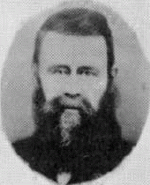 |
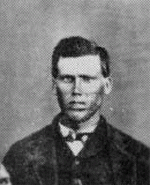 |
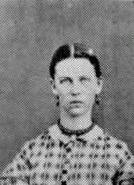 |
| Miriam Billingsley Adair |
George Washington Adair |
James Turner Billingsley |
Almira Howd Billingsley |
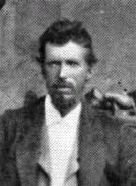 |
 |
 |
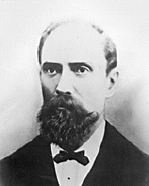 |
| Archibald Huston Billingsley |
Jane Thorp Billingsley |
Martha Billingsley Fenn |
Thomas Fenn |
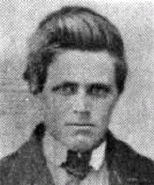 |
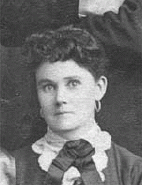 |
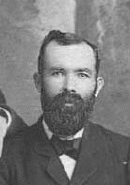 |
| Elijah Moroni Billingsley |
Victoria Billingsley Pratt |
Helaman Pratt |
In 1855 Elijah, Emeline, and the Provo Saints in general were rebaptized. Elijah’s history records that he served as bishop’s counselor in Provo. On February 7, 1857, Elijah, age 50, took a second wife, Mary DeGraw, who was not yet 13. They were sealed by Brigham Young in the upper room of the President’s Office in Salt Lake City, though the Endowment House was open that spring. Perhaps because of her extreme young age, Mary does not yet appear to have been endowed. Mary and Elijah’s first child, Jesse Eugene, was born November 19, 1859, in Provo when Mary was 15. The 1860 census shows Elijah, Emeline, Mary, Emeline’s younger children (some of them older than Mary, some younger) and Mary’s baby all living in the same household. On August 2, 1862, Mary, now 18, was endowed, and both Emeline and Mary were sealed to Elijah again, this time by Daniel H. Wells, in the Endowment House in Salt Lake City, with Brigham Young as a witness.17
Mary DeGraw was born October 6, 1844, in Lima, Adams County, Illinois, a daughter of Jacob DeGraw and Sophia Dutton. The DeGraws were converted to the Church by Brigham Young in New York in 1840. Jacob had undersized legs, perhaps from having polio as a child, and got about on crutches. He worked as a tailor and made suits for Brigham Young and others. He did all the family’s sewing. They moved to Lima some time before 1842. In September 1845, a year after Mary was born, many of the Saints in Lima were driven from their homes by a mob, the DeGraws apparently among them. They moved to Nauvoo, where Jacob worked as a mason on the temple, then lived in Iowa. The DeGraws crossed the plains in 1852 in the Weimer company. Family sources say they came in a handcart company and that they pushed Jacob in a cart. It’s possible they did come in a cart, but the Weimer company was a wagon company—the first handcart company came four years later. The family lived in Lehi until Jacob died in early 1856. In December of that year Sophia married William Willis Boren and moved to Provo. Two and a half months later, Elijah and Mary were married. It’s difficult to understand why they married when she was such a young girl. There are early marriages among the Billingsleys’ children, but not this early. Perhaps the arrangement was prompted by Mary’s mother’s remarrying. Elijah may have taken Mary in to protect her and thought it wouldn’t be proper to have her in the house without a ceremony. Mary and Elijah had two more children in Provo: Elizabeth Mahalia (3 May 1862), and Mary Ellen (20 Aug. 1864).18
In late April 1857, two months after Elijah and Mary were married, the Provo militia was reorganized, with Elijah as second lieutenant in Company A, the Silver Grays. Barely three months later, the Mormons learned that United States President Buchanan was sending an army to Utah to put down a supposed rebellion. The Saints had been driven from their homes three times already, with government troops aiding and abetting, so Brigham Young called up the militia and declared martial law. Some of the Provo companies (not Elijah’s) were ordered east to observe the army and help immigrants. Others went on exploration missions, perhaps to give the militia a better idea where they might be fighting, or perhaps to find places for the Saints to run. On August 18, Elijah’s and Emeline’s son Campbell was sent with nine others on a 20-day mission to explore the headwaters of the Spanish Fork, Duchesne, and Provo Rivers. On September 1, Elijah himself and ten others left to explore the south fork of the Provo and surrounding country. The confrontation with the army ended through negotiations, but Brigham Young ordered all of northern Utah evacuated while the army passed through. For a time Provo was Church headquarters, and half the population of the territory was camped in Utah Valley. Horace Hall Cummings, a nephew of the James W. Cummings who baptized Elijah, wrote of the long lines of covered wagons during the move south. “When father reached Provo mother could go no farther, and the best shelter he could obtain for her was old Father Billingsley’s granary, where, [on June 12, 1858,] on a straw bed on the earth floor, I was born.”19
In October 1864 Brigham Young began sending settlers to the Muddy Mission in the hot country between St. George and Las Vegas. We don’t know whether the Billingsleys were called or whether they volunteered, but they were among the first year’s settlers in 1865. Elijah and Emeline were 58 by now, and Mary 20. The mission was named for the Muddy River, which was muddy in one spot, though clear everywhere else. Maybe they would have called it the Dusty Mission if they were trying to describe the valley, since there was little grass to be had. The road from St. George was rough and treacherous: mountainous in one stretch, hot and waterless in another, frequently washed out along the river, whose bed was full of quicksand. Along the way lay Virgin Hill, a hogback with cliffs on either side and the road too steep for a wagon near the top. Travelers would walk their teams up a trail, triple them up, and then “lengthen their chains” by hitching the teams to a log and the log to the tongue of a wagon.20
The Billingsleys are listed with the first inhabitants of St. Joseph in the late spring of 1865. The branch record notes: “The city was laid out and a water ditch furnished within ten days and the brethren proceeded to plant corn, sugar cane, and some cotton and garden produce.” Much of the land in the Muddy colonies was covered in creosote and mesquite brush, which made for hard “grubbing”—a man working all day could get up seven or eight of them. Indians would hire on to dig them for a cup of flour per bush, which seemed like a bargain to the settlers, except they had so little flour. Settlers had to travel 130 miles one way for timber, so they built with dobies (adobe bricks) and thatched their roofs with flags (tules), though even a thatched roof needs a support beam. As for fires, it was hot enough in summer and mild enough in winter that settlers could get by with mesquite and greasewood. Brigham Young wanted people on the Muddy in order to establish trade with riverboats on the Colorado, which would also help create a water route for emigrants to Zion. Another purpose was to help make the body of Saints self-sufficient by raising semi-tropical crops like cotton. It seems likely that Elijah had experience with cotton from his early years in the South, so perhaps he was called to the mission for his expertise. The settlers also tried their hand at lemons, oranges, figs, grapes, and sugar cane, along with the usual northern fruits and vegetables. They grew wheat in abundance, which they planted in the fall and harvested in early June.21 In summer temperatures routinely reached 120 degrees. Abraham A. Kimball, who moved to St. Joseph in 1868, wrote:
When the warm weather came we were unable to sleep in the house, and were compelled to resort to the sheds and sleep on top of them to keep from scorpions, tarantulas, rattlesnakes, etc. No escaping mosquitoes.
Many a time I have got up in the night and rolled in the ditch to cool off, but soon found it injurious to my health. I have often seen chickens at daybreak holding their wings up and lolling for breath, the same as at noon in a decent country. An egg would roast in a short time laying in the sand. I have eaten as fine roasted onion, (sun roasted) as need to be. By watering carrots in the morning they would cook by noon, so the skin would all slip off them by pulling them up.
The way some men made coffee while working was to put water and coffee in a canteen, hang it on a bush, and by noon it would be well seeped, and fit for use. I have been much amused to see the children going home from school at noon. They would take their bonnets, aprons, or some green brush (if they had them) in their hands, run as far as they could, thrown them down and stand on them until their feet cooled off, then run again. [I perspired so much that] when I would take my overalls off nights after they had dried, they would come near standing alone from the minerals and salt in them. . . . No one can tell how the poor Dixie people suffered from heat until they go through the same.22
St. Joseph had a murder while the town was still being laid out. The settlers had no judge, so they appointed the bishop justice of the peace pro tem and tried and convicted the man. Then they didn’t know what to do with him. Those first few years the people thought they were in Arizona, but it was too far to take him to any Arizona town, nor could the town spare anyone. Warren Foote, another settler, records: “It was finally thought best to send him to St. George and they could do what they pleased with him. . . . He soon made his escape from St. George and no one bothered themselves about him anymore. . . . We were very glad to get rid of such characters.” There is evidence that Elijah was made a judge shortly after. A newspaper dispatch describing St. Joseph’s 24th of July celebration that year refers to him as “Judge” Billingsley. St. Joseph hosted neighboring St. Thomas that day, which began with a salute of gunfire at daybreak, followed at 10:00 by orations by Judge Billingsley and Presidents Smith and Bennett (who were ecclesiastical leaders in the two colonies), then in the afternoon toasts, singing, a feast of various goodies including wild grapes, and in the evening more songs and dancing until past midnight. In June of the following year another dispatch says that Judge Billingsley, “Col.” Smith, and “Mr.” Bennett traveled to Callville to organize Pah-Ute County, Arizona. In October 1865, the branch record has Elijah presiding in a Church court for Sister Catharine Hunter, who was excommunicated for “unchristian-like conduct.” Excommunications were much more common in those days, and for much smaller offenses, than now. Sister Hunter “made satisfaction to the branch” and was rebaptized in early November. The branch record continues: “Considerable corn, molasses, melons and some cotton was raised the first year, but the brethren who came without families mostly returning weakened the settlement so much that the Indians took most of the corn.” That first year “much sickness prevailed, mostly fever and ague and flux” (ague was probably malaria, and flux dysentery). Five of the settlers died.23
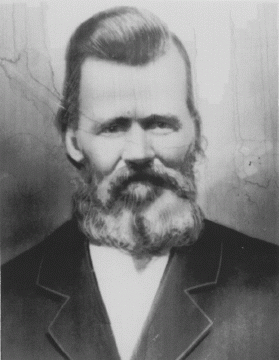 |
| Elijah |
In March of 1866 Indians drove off about 30 head of horses, cows, and oxen from St. Joseph. Twenty-five men went after them but couldn’t catch them. The Indians had placed food and water at strategic locations, and the settlers were not so supplied. All the Indians in the valley disappeared and didn’t return for a long time. Finally Thomas, one of the chiefs, came back and was taken prisoner. He said he had tried to keep the people from going on the raid but a neighboring band had talked them into it. But the other band kept all the cattle, and now Thomas’s people, cut off from their normal range, had nothing. On May 30 the Mormons and a large number of Indians held a meeting to talk about the Indians returning. President Smith explained that they needed their cattle to plow their land and grow grain to feed their women and children, and that without them they might go hungry. Tears ran down Thomas’s eyes, and whites and Indians were reconciled. Back in Utah the Black Hawk War with the Utes and Navajos was just getting going. Brigham Young, fearing the violence would spill over into the Muddy, sent Erastus Snow to get the people to fort up again. Elder Snow held a conference at St. Joseph and had different men speak up in favor of different sites. One of the leading ones was the sandy bench east of Mill Point. In between sessions he and some of the prominent brethren went a little ways outside of town to deliberate. Warren Foote records that Elder Snow asked him what he thought the prospects of a canal to the site were. Foote said he thought the water would sink into the sand and evaporate and the ditch would fill up every time the wind blew. He says Elder Snow next asked Elijah Billingsley what he thought, and Brother Billingsley “answered about the same in substance that I did.” Elder Snow ruled that the people were at liberty to go to St. Thomas or Mill Point. St. Joseph Ward held another conference and decided on Mill Point. A few families went to other settlements. The Billingsleys, in spite of Elijah’s earlier counsel, decided to respect the wishes of the conference and go with the St. Joseph Saints. They called the new town St. Joseph also.24
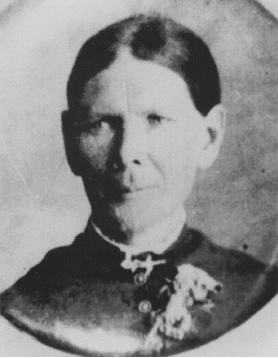 |
| Mary |
If the 1865 settlers had started out in new St. Joseph, maybe they would have called it the Sandy Mission. In places it was a good trick for a team to pull an empty wagon. For two years the people pitched in to build a ditch, six miles long. In one place they cut through a rock ridge and elsewhere they had to build levees 12 feet high. Settlers were continually giving up and heading north, which made the burden of public works harder on those who remained. In general conference in the fall of 1867, a large number of missionaries were called to build up the Muddy, but many of those who went didn’t stay long. Abraham Kimball, one of the missionaries who stayed, says some of the old settlers had grown so poor they had cut up their bed ticking and sheets to make clothing, and once when that failed they had to stop having church meetings for a while. He says missionaries and old settlers joined together for dances. Elijah’s granddaughter Gladys Pratt Young reports that her mother, Victoria, met her future husband, Helaman Pratt, at one of them. Abraham says his own wife would shed tears as she sent him off to work in the fields with nothing but a piece of bread and a can of molasses. Sometimes to keep going, men left their fields to mine salt and sell it in nearby mining camps. Ultimately Elijah’s prediction proved true—they couldn’t keep water in the ditch. Crews had to clean it twice a week, and the wind would fill it in again about as quickly. Once the wind blew a night and a day and filled in a two-mile section—all that was left to show a canal had been there was a streak of wet sand. The people did manage to raise some wheat and a considerable amount of cotton. Mary and Elijah’s daughter Mariah Louisa was born in this St. Joseph on January 26, 1867.25
In 1868 Brigham Young sent his nephew Joseph W. Young to take charge of the Muddy Mission and recruit older families who might be more likely to stay. Elijah must have been aware of such efforts. According to a book on the Billingsleys in America, Elijah wrote a letter “to any brothers, sisters, nephews or nieces living in Texas asking them or any of them to write him upon which he would tell them more of the wonderful country where he lived, etc.” Elijah’s parents, both deceased, had moved to Bastrop County, Texas, in 1848, as did several of Elijah’s brothers and sisters. Elijah’s younger brother Jesse went in 1835 and gained notoriety in the Texas War of Independence, where he was credited with coining the battle cry “Remember the Alamo!” During the battle of San Jacinto, Jesse Billingsley’s volunteers were pounding a much larger Mexican force when General Sam Houston sent a note suggesting he hold back. Captain Billingsley replied to the messenger, “Present my compliments to General Houston and tell him to go to hell!” He was a member of the House of Representatives of the Texas Republic, where he wore a buckskin suit he had captured from an Indian, and slept on the floor of the capitol building. He led another company of militia on the frontier on 1838, feeding and clothing his men on wild game and billing the government for a single bag of salt and a single sack of coffee. These details raise the question of what Elijah was like. Did he have Jesse’s fire? If so, he seems to have tempered and channeled it into commitment to the gospel and the community. Elijah’s trying to coax his non-Mormon brothers and sisters to the “wonderful country” of the Muddy Mission is really no less imaginative than Jesse’s billing the Texas government for a single bag of salt and a single bag of coffee. Leah Pratt Call, another granddaughter, describes Elijah as “an old Southern gentleman.” Looking at the intensity of his gaze in the photographs, it’s easy to imagine him just that way: principled to the point of stubbornness, courteous, upright, cultured beyond his circumstances, proud but ever restrained and dignified. Lacking more testimony we don’t really know. There is also the evidence of how his children turned out. His daughter Victoria was an imaginative, spirited woman, an exceptional cook, a fine singer. His son Campbell was a schoolteacher for a time. His oldest daughter Miriam, also an exceptional cook, sang and danced and was a writer, poet, dramatist, and director. Victoria and Miriam were both tiny women—again, we don’t know, but looking at the pictures it’s easy to see Elijah as small of stature too. As to Emeline’s and Mary’s temperaments, we have even less of a clue.26
Elijah’s history records only one event from this time period: “In 1865 I went to the Muddy. While there my house and property was burnt up.” In St. Joseph on August 18, 1868, a 119-degree day, while the men were off in the fields, some boys tried to light a fire in a tent by the fort to cook some potatoes. The tent caught fire, and the wind blew sparks to the surrounding houses, whose thatched roofs caught fire, along with the meetinghouse, and before long half the fort was in flames. Nineteen cabins burned, and many of the Saints lost everything. A letter from Bishop Bennett to the mission leaders lists the damage and states: “Brothers Thomas and Billingsley lost all with the exception of their beds.” Many lost all but the clothes they had on, and those not their best. The Southern Utah settlements took up a collection for them, but as often happens in such situations, not all of it reached them.27
The next spring, 1869, Utah Territory exercised a claim to the valley of the Muddy, organized it as part of Rio Virgen County, and appointed Joseph W. Young probate judge. Judge Young appointed Elijah Billingsley one of three selectmen. Pay for their services was $3 a day. The people of St. Joseph spent the spring and summer working on a new, 10-mile ditch. When that failed, they moved the town a second time to a site one and a half miles upstream. By that fall they abandoned this site as well. Sixty of the families moved to the original site of St. Joseph, and twenty families, including the Billingsleys, moved to a new site across the river that they called Overton. The people took the dobies from their old houses when they moved. Helaman Pratt, by now Elijah and Emeline’s son-in-law, was made Overton’s presiding elder. Elijah and Mary’s daughter Altamiah Sophia Billingsley was born September 13, right around the time of the move. The Billingsleys appear on both the Utah and Nevada censuses for Overton in 1870—it turns out that Nevada also had a claim on the Muddy, and when the survey went through and Congress ruled, Nevada’s was the claim that held.28
The Indians in the area were hard for the settlers to understand. Some settlers commented on the Indian’s love of gambling—they wagered articles of clothing, so that you might see an Indian dapper one day and practically naked the next. Settlers sometimes had trouble telling the Indians apart, because the same set of clothing kept changing hands. Some of the Indians farmed, and the settlers helped them all they could, which was the general Mormon policy. Some of the Indians would stay with the fields and work hard and get a decent yield, but then their cousins who had been out ranging all season and hadn’t done a bit of work on the crops would come, and within a short time all their harvest would be gone. In spite of Chief Thomas’s earlier promise, the settlers had to put up with ongoing petty theft, and they had several confrontations. In Overton once, when Helaman caught two young Indians stealing yet more corn, he locked them in the schoolhouse. The Indians rode into town, and the chief strode up to Helaman at the door of the schoolhouse until they were breast to breast, the chief shouting at him through an interpreter. Helaman had his six-shooter against the chief’s chest. All the Indians had their arrows trained on Helaman, and all the pioneers had their guns pointed at the Indians. Helaman held firm but says he made very sure he didn’t squeeze the trigger. Finally he got the chief to understand that the grain they were stealing was their winter food and without it they would starve. The chief backed down, the Indians promised they wouldn’t steal their grain, the settlers released the young men, and Helaman told the Indians that whenever they were hungry and asked, the settlers would give them a portion of what they had on hand.29
In early 1870, not long after the border dispute with Nevada was settled, the sheriff of Lincoln County informed the Mormon that they owed property taxes to Nevada going back four years. It didn’t matter that they had paid taxes to Utah during that time. Nevada, a mining state, taxed at many times the Utah rate, and the sheriff demanded payment in gold, though there probably wasn’t that much gold in the whole of the Muddy. Brigham Young visited the colonies that spring. Rumors came back that he was disappointed in the country and wanted to know who had recommended it to him in the first place. Nevertheless he advised the people to work like they would live there forever. With the completion of the transcontinental railroad in 1869, the Dixie Saints found they couldn’t sell their cotton.By the winter of 1870 they were so poor that the Muddy leaders were pleading with the brethren in St. George to buy their cotton and send them tools and clothing, as some of the settlers were nearly naked again. Brigham Young finally advised the Saints to meet and decide whether to abandon the mission, recommending they not stay if they did not have a majority. Those in St. Thomas, all but one, voted to go; those in St. Joseph too, all but one; and also those in Overton, all but one.30
The sheriff came and served summonses on every man in Overton to answer for delinquent taxes. The Saints rushed to get as much property out of the state as they could before the sheriff attached liens to everything. Brigham Young advised them to move to Long Valley, east of what is now Zion Park, which had been abandoned by earlier settlers during the Black Hawk War. They decided to travel to their new homes together and keep their ward organizations. St. Joseph was to leave first, on February 8th, followed by Overton on the 16th, and St. Thomas March 1st. The members in St. George sent ox teams to help them along. Abraham Kimball recorded that of the 150 missionaries sent to the Muddy in 1867, only nine remained. He was one. Helaman was one. The Billingsleys had been here since 1865. In St. Joseph strangers slunk in the shadows, slipping in and taking possession of houses and property the moment they were abandoned. A man offered to buy the Saints’ ripening wheat for one and a half bushels per acre, which barely covered their seed. It seemed better than nothing, so they accepted, and even that he didn’t pay. Gladys Pratt describes the Overton exodus: “When part way up the dugway they stopped to look back at the settlement’s cabins. They saw them blazing and Indians dancing and yelling around them as they burned to the ground. What a heartache. All their efforts of the last two years going up in flames.” One more hardship on the way—a snowstorm hit the travelers in the Santa Clara Mountains. Elijah’s brief history records one important item of help he received: a son met him and gave him $100 to keep him going. The St. Joseph Saints settled in Mt. Carmel, the Billingsleys with them. Elijah and Emeline were 64 now and Mary 26. The people planted wheat their first summer, and then yet another hardship—grasshoppers ate their first crop. Some of the men went north to earn money to keep them going.31
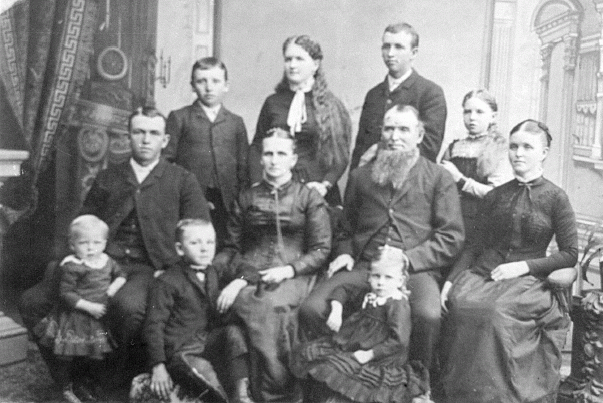 |
| Elijah, Mary, and family |
Mary and Elijah had two children in Mt. Carmel: John (27 Jan. 1872) and George Arthur (26 Jun. 1874). In 1874 Brigham Young began organizing the people up and down the territory into the Order of Enoch, or the United Order. People would deed all their property to the local order and then receive back a stewardship: an assignment and the capital necessary to make it work. Profits went to the order as a whole. Elijah and his family were among the overwhelming majority who gave their names. Elijah was appointed an assistant to the head gardener, who oversaw the order’s vegetable gardens. Most united orders failed after a short time, and Mt. Carmel’s wasn’t without disunity. About half the order’s members withdrew that fall, but the Muddy Saints, who had been tempered in the furnace of affliction, wanted to stick with it. Now the order found itself competing directly with individual members of their own congregation. To avoid conflict, they decided to move up the valley two miles and found a new settlement. The next summer and fall, 1875, they built a fort and living quarters and named their town Orderville.32
To avoid lawsuits from neighbors and disgruntled members, the united orders incorporated legally. The Orderville board had authority to act for the order, but their decisions were brought before the members, and all things were done by common consent. The clerks kept track of all work done, crediting each man $1.50 for each day’s work, whether “mechanic” or “laborer,” the most skilled artisan or the simplest hand. Families were debited a certain amount for their food, lodgings, and whatever else they used. At the end of each year, those whose credits were greater than their debits donated the surplus to the order, and those whose debits were greater than their credits had their debt forgiven, so all started out on the same foot again. To join the order members had to agree to avoid selfishness, pray as a family and alone, keep the Sabbath, treat family members with kindness and affection, combine their labor, avoid extravagant fashion, pay tithing, and give all they had to build up the order and the kingdom of God. Some of the questions asked were:
“Do you use tobacco, tea, or coffee, or indulge in drinking intoxicating drinks? Are you in the habit of stealing or taking what does not belong to you personally? Are you in the habit of lying or backbiting, or slandering your brethren or sisters? Are you in the habit of using vulgar or obscene jests or conduct? Are you in the habit of quarreling? If so will you cease from this? Are you in the habit of giving way to bad temper and abusing dumb animals? If so, will you cease from such conduct? Will you take a course when you find a brother or sister out of temper to maintain the peace by saying nothing to aggravate, and silently walk away if he or she shall not cease? Are you willing to work the same as the rest of the company according to your strength and ability and for the same recompense as your peers? Are you willing to be subject to those who are placed over you and do as you are told cheerfully and not sullenly?”
Those willing were baptized into the order. Elijah was baptized with fifty original members on July 11, 1875 (records are sketchy—other family members may have been as well). In December he confirmed other members of the community into the order.
The order owned all the houses and property, and people paid rent for what they used. In the beginning they all ate together at three long tables in the community dining hall. Thomas Robertson, a blacksmith and musician, used his cornet to call the people to meals precisely at 7:00 a.m., noon, and 6:00 in the evening (also for Sunday meetings). Cooks prepared large quantities of bread, potatoes, hominy, squash, and other vegetables, meat, and occasionally cakes, pies, and puddings and passed them through a slat to the servers. Waitresses served the food and kept things moving, then passed the dishes back to the kitchen for the dishwashers. Janitors scoured the place down with sand, since soap was a rarity. All the women in town took turns in one or the other of the departments, serving a week at a time every seven weeks. In the earliest days the town’s grown-ups all ate together, followed by the children, overseen by “Aunty Harmon,” a rather stern woman who made sure the little ones behaved. When some of the mothers objected to her disciplining their children, the order began serving meals by family. In 1880 water running through a gopher hole damaged the foundation of the dining hall, and a flood that same year washed out the big brick ovens. So the order began to use children to distribute produce and other goods to individual families, and they prepared their own meals.
Orderville produced its own clothing, and here too all were alike. Men wore gray trousers and straw hats braided by the women. They had gray or black suits for Sundays. Women wore calico mother hubbard dresses and sunbonnets on weekdays, with linsey princess wrapper dresses for Sundays. The people were very poor at first, but a man with stock in a mine joined, and others homesteaded and donated their land, and soon the order began to prosper. For several years they did better than many of the members had done before and better than their neighbors. By combining their resources, the people were able to build a woolen factory, a tannery, blacksmith shops, a grist mill, molasses mills, a bucket factory, a shoe shop, a broom making operation, a post office, a telegraph office, a bakery, a sawmill, a freighting operation, dairies, farms (including a cotton farm in Washington near St. George), and ranches (including the Moccasin Ranch in Mojave County, Arizona). When the outside economy got going, other communities matched their holdings, lifting most people and making a few wealthy, but prosperity came earlier to Orderville, where all were equal and there were no rich or poor. Orderville was a healthy place, with an herb doctor who was a member of the order. The people had frequent dances, a martial band, a choir, and a drama department that put on frequent plays, sometimes for neighboring communities. They had quilting bees, melon feasts, corn roasts, candy pulls, horse races, horseshoe tosses, and an annual fair.
The order operated for ten years, which makes it by far the most successful united order in the pioneer period. Citizens always took their share of ribbing from neighbors, who made fun of their pants and hats and told outlandish stories about their eating habits. There was supposedly a gravy trough that ran the length of their common table, which the servers filled from one end, into which the people dipped their bread as it flowed by. Meat was reserved mainly for the leaders, and when one boy reached for a piece during the blessing, a waiter nearly cut his finger off. None of this of course was true.33 As time went on a spirit of jealousy crept in. They had a few loafers, and a few newcomers who tried to foment discontent, especially among the young men, telling them they would have no inheritance when they came of age and that all their work was for nothing. The people of the order thought they could beat these problems. They had had people grow dissatisfied before and pull out. They simply gave them back the value of their capital investment and their wages for that year and sent them on their way. In July 1883, under counsel from Apostle Erastus Snow, Orderville switched to the stewardship plan, in which they no longer paid equal wages for all kinds of work and people kept their earnings at the end of the year. This exacerbated the problem of jealousy. In June 1884 the First Presidency of the Church recommended they go back to the old plan and that they set aside a portion of the order’s increase for the young men’s inheritance. They also counseled the order to budget a little for each family to spend on personal tastes. Maybe if they had continued they wouldn’t have dressed alike anymore. But other pressures were afoot. Many of the men were on the run from the federal marshals because of plural marriage. Stake leaders warned they were likely to be hounded by lawsuits, both from disgruntled members and neighbors jealous of their holdings. So in 1885 they reluctantly agreed to disband. The stake officers divided the property and held an auction, allowing the townspeople to bid first, using their credits in the order. Edwin Dilworth Woolley, who conducted the auction, says it was as quiet as a Quaker meeting. All the members sat silent while each man bid on the property where he worked and lived.
| Some of the Family of Elijah Randolph and Mary DeGraw Billingsley |
 |
| Elijah, Mary, and family |
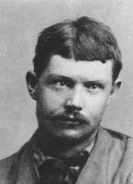 |
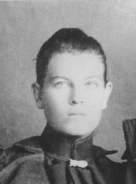 |
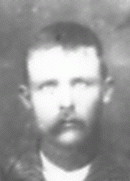 |
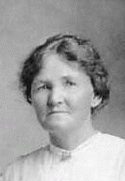 |
| John and wife Dortha Rosetta Nelson |
Mary Ellen and husband William Henry Stapley |
||
 |
| John, Ida, and George |
We don’t know all that Elijah did in the order, but in 1875 he taught school, a job sometimes given to men who couldn’t do hard physical work because of infirmity or age. Sometime after 1877 he was assigned to the stockyards. (The townspeople would gather there for husking bees on moonlit nights after the corn harvest in the fall.) A piece of doggerel written by Samuel Claridge for the 25th anniversary of the order’s founding mentions many townspeople by name. Elijah’s stanza suggests he may have done odd jobs: “See Father Billingsley on parade / Dressed up like Uncle Billie, / Through mud and slush his sled would wade / To feed the pigs some swilly.” Perhaps Uncle Billie was a dapper politician or other public figure, which would fit with the image of Elijah as a Southern gentleman, looking dignified and well-dressed even in the Orderville uniform, even while feeding pigs. Or Uncle Billie could have been a vaudeville performer or someone in the town Elijah mimicked on some public occasion. Maybe Elijah had a dramatic streak like some of his children.34 In 1877 Elijah was ordained stake patriarch. His eloquence and the visionary nature of his faith are hinted at in the blessings that have come down. Elijah and Mary had a daughter, Ida, on September 23, 1876. Emeline died in Orderville November 5, 1882, just shy of 76 years old. Elijah and Mary had one more child, Samuel, on February 23, 1884, when Elijah was 77 and Mary 39. Samuel was their ninth and last child, giving Elijah a total of 20. Elijah and Mary remained in the order to the end, receiving $696.10 at the time of the settlement in 1885, which was something near the average. Elijah died in Orderville three years later, on September 28, 1888, at the age of 81. Mary lived to be 55, dying in Thatcher, Arizona, on November 23, 1899.35
Notes1. John Northcott died some time before the 1820 census. Ruhamah is listed as a head of household in Rutherford that year, and as a head of household in Gibson County in 1830. It is possible the Billingsleys and Northcotts knew each other in Rutherford County. Or perhaps Emeline and Elijah met some other way and Ruhamah moved to Gibson County to be near them.
2. For a sample of legal references, see Emily B. Walker, Gibson County, Tennessee, Minutes of the County Court of Pleas and Quarter Sessions, Volume A, January 5, 1824–September 4, 1828 (1987). “Elijah’s” appointment as a justice of the peace is on page 61.
3. For an example of the slave tradition, see Norma Brown Billingsley Dallof, “Elijah Randolph Billingsley,” in Maude B. Nebeker Mickelson, Book of Remembrance, FHL 2055391. Norma, a descendant of Martha, says Elijah “raised cotton” and that he had a “big mansion” and slaves and that “he was very wealthy.” The Gibson County, Tennessee, tax records for 1824–35, available on the Internet and the Family History Library, are somewhat ambiguous because Elijah, his Uncle Elijah, and his brother Elisha all lived in the same county. One of the Elijahs owned slaves briefly—I’m guessing the older one because it is clearer he owned land. Tax records for Pontotoc County, Mississippi, for 1836–37, 1839, 1841, 1845, available in the Mississippi state archives, list no land or slaves. The 1830, 1840, and 1845 censuses show Elijah had no slaves those years.
4. Maud Bliss Allen, "History of Miriam Billingsly Adair," available at the Daughters of Utah Pioneers library in Salt Lake City; Maude interviewed Miriam’s son Jedediah.
5. Pontotoc County Mississippi Probate Minutes, vol. 1, 1836–1849, FHL film 0895492 item 1; Norma Dallof and Maud Allen both mention Elijah was a judge; James W. Cummings, Journal, Historical Department Archives, The Church of Jesus Christ of Latter-day Saints, MS 1408 1–3; date of Elder Cummings’s visit unclear. Elijah’s baptism and ordination are listed in the record of the 30th Quorum of Seventy, 1844–1975, LDS HD Archives, CR 499 (reel 91).
6. Elijah’s return to Pontotoc County is from court minutes; Emeline’s baptism date from temple records; Miriam’s baptism and quotes from Ethel Adair Pope, “Miriam Billingsley Adair,” 1967, available from the DUP. Of their departure from Mississippi, Norma Dalloff writes: “They left their big mansion and their slaves in Mississippi. The slaves wept hard to see their master go north, as he was so good to them.” This story, also surely distorted by time, can be taken any number of ways, not all of them flattering to the Billingsleys. Perhaps the most plausible explanation was that the slaves were Jeptha’s, back in Tennessee, weeping to see Elijah, whom they may have known since boyhood, grow up and move away with his family.
7. Pope; in this history the author quotes the extant pages of Miriam’s autobiography and adds to them.
8. Pope. Note that Miriam married in May 1846 and may not have finished the trip to Mt. Pisgah with the Billingsleys, so the May 23 arrival date may not be exact. Elijah recorded in his history that he “moved to Pisgah in 1846, stayed in Pisgah four years,” but he does not give precise dates. Baptism dates are from temple records.
9. “The Life of Tabitha Louvina Billingsley,” in Mickelson; the author’s name is not given at the top, and one or more pages are missing at the end. The exact wording is as follows: “When Elijah, Sr. discovered upon moving to Mississippi that polygamy was one of the creeds of his new faith, he registered his protest of it by returning to Tennessee. There, since he was a man of reputation, character and no small means, he was hard and lengthily prevailed upon by the members of the Mormon Faith not to abandon it, these discussions sometimes lasting all night. Eventually, however, the Elders were evidently successful, as it is a recorded fact, that Elijah Billingsley, his wife Emeline and their eight children . . . were driven from Iowa with the rest of the Mormons in 1850.”
10. Gardner Snow, Record Book, LDS HD Archives, MS 2614 1; Snow, a captain of fifty, indicates Elijah had nine people in his party (presumably himself, Emeline, and their six living, unmarried children), two wagons, no horses, nine head of cattle, three rifles, three pounds of lead for bullets, and one pound of powder.
11. Pope; “Life of Tabitha Louvina Billingsley.”
12. William Snow, “Journal, 1832–1833 and 1850,” LDS HD Archives, MS 2296; Joseph Young, “Joseph Young Journal,” Brigham Young University Harold B. Lee Library, Vault MSS 23 (available in PDF on the library’s web site as part of the Overland Trails Project); Eliza Jane Cheney Rawson, Historical Letters and Sketches, LDS HD Archives, MS 4352 p. 24; and “Autobiography of James McBride, 1818–1876,” in Utah Pioneer Biographies (Utah State Historical Society, 1947), 19:73; available at the FHL.
13. Elijah R. Billingsley, “Genealogy of Elijah Billingsley, Mount Carmel, Kane County, April 8th, 1875,” given in full below; Record of Members Index (Minnie Margetts file), LDS HD Archives, CR 100 33 reel 2.
14. J. Marinus Jensen, History of Provo, Utah [1924], 102–4, 153.
15. Provo Probate docket 1, Book 1, Dec 27, 1852 to Sept. 1859; probate Docket A, March 1861 to April 1874, FHL film 0482934; Coleman Boren, 1808–1858, Boren Family Association, prob. 1972, 30–32, FHL 929.273 B644.
16. Jensen, History of Provo, 122, 125–26; “Historical Record of Lucy M. Smith,” Lucy M. Smith Papers, in Church Archives; in “The Grasshopper War of 1855 and the Provo Sugar Miracle,” Ensign, Feb. 1986, 60; “Life Sketch of Elias Hicks Blackburn,” in Andrew Jenson, Latter-day Saint Biographical Encyclopedia (1901), 1:492.
17. Elijah and Mary’s marriage is recorded in the Nauvoo temple record (FHL film 0183374), along with a number of other marriages performed in the President’s Office and on the plains. This appears in the Ordinance Index as “Elizah_ Billingsby,” with a note that “Elizah’s” sex is different from what his name would lead you to believe. The “j” in the Nauvoo temple record does look like a “z.” Neither the Nauvoo temple record nor the Endowment House record lists an endowment for Mary during these years. Sealings without endowments were not unheard of at the time. A Bible that has come down through the Billingsley family says Elijah and Mary “were sealed or married according to the Holy order of the Priesthood February the [blank] 1857.” Regarding the 1862 sealing, Elijah, Emeline, and Mary occupy a single entry in the Endowment House record—all three must have knelt at the altar at the same time. The Billingsley family Bible records this sealing as well, using the same phrasing as the 1857 marriage.
18. Details of Mary’s early life are from a draft copy of Ruby Henson Behrman Packer, “History of Jacob DeGraw (5 July 1811–5 January 1856) and Sophia Dutton (26 August 1814–17 November 1902).”
19. “History of Provo,” in Tullidge’s Quarterly Magazine, vol. 3, no. 3 (July 1884), 247–51, 271; Horace Hall Cummings, in Susan Arrington Madsen, Growing Up in Zion (Salt Lake City, Utah: Deseret Book, 1996), 49–50.
20. S. George Ellsworth, Mormon Settlement on the Muddy, Dello G. Dayton Memorial Lecture, 1985 (Ogden, Utah: Weber State College Press, 1987), 12–14.
21. “St. Joseph Record for One Year” (1865–66), FHL film 0014924 items 1–3; Ellsworth; Semi-Weekly Telegraph, 2 Jan. 1868.
22. Abraham A. Kimball, Journal, 62; in LDS HD Archives, MS 1778, 79–80; typescript in BYU library; Ellsworth, 15–16.
23. Warren Foote, Journal, FHL film 0000495; Deseret News, 30 August 1865; 21 June 1866; St. Joseph branch record.
24. Jenson; Foote, 195–200.
25. Kimball, 62, 68; Ellsworth, 9–10; Encyclopedic History of the Church, “St. Joseph”; “History of Lyman Utley Leavitt,” available at DUP; Semi-Weekly Telegraph, 14 Sept. 1868; Gladys Pratt Young, History of Helaman and Emaline Victoria Billingsley Pratt, in my possession.
26. Allen; Harry Alexander Davis, The Billingsley Family (Billingsly-Billingslea) in America (Washington, D.C., 1936), 167–71, 387–88; Jeptha is number 87, Elijah 206, and Jesse 208. Jesse appears in two paintings of famous battles at the state capital in Austin. Leah Pratt Call’s description is from her biographical sketch, “Helaman Pratt.” Leah was eight when Elijah died and may have met him, so this impression could be firsthand.
27. Jenson; Ellsworth, 18–20.
28. Jenson; St. Joseph branch record; Ellsworth, 10. Family group sheets presently in circulation show Altamia Sophia born in St. Joseph but also show her older sister Mariah Louisa born in Overton. I haven’t been able to prove where either girl was born, but Mariah Louisa could not have been born in Overton, since it didn’t exist at the time.
29. Semi-Weekly Telegraph, 8 Oct. 1866; 28 May 1868; Gladys Pratt Young, History; Mary Pratt Parrish, Look to the Rock from Which Ye Are Hewn (c. 1984), 4–5; Jensen; Kimball, 71–73; James H. McClintock, Mormon Settlement in Arizona (1921), 108–10; Elvira Blackburn, “Story of the Stolen Cow,” in Helen Blackburn Willden, comp., Events in the Life of Henry Blackburn (1995), 28.
30. Jenson; Ellsworth, 20–26; St. Joseph branch record.
31. Brigham Young to Horace S. Eldredge, 7 May 1871, LDS HD Archives, CR 1234 1, Letterbook 12, pp. 572–77; Gladys Pratt Young, History; Ellsworth, 28–29; Jensen; Hattie Blackburn, comp., “Living the United Order in Orderville,” in Kate B. Carter, comp., Heart Throbs of the West (Salt Lake City: Daughters of Utah Pioneers, 1943), 4:4.
32. The following account is drawn from Francis L. Porter, General History of Orderville (the official history, no date, but Porter was a participant), LDS HD Archives, MS LR 6543 29; “Living the United Order in Orderville,” cited above; Adonis Findlay Robinson, ed., History of Kane County (Kane County Daughters of Utah Pioneers, 1970); and Orderville: Heart of the United Order (Kanab, Utah: Southern Utah Publishing, 1996). This last includes original material, an excerpt from the 1970 History of Kane County, and two other valuable reprints: Mark A. Pendleton, “The Orderville United Order of Zion,” Utah Historical Quarterly, vol. 7, no. 4 (Oct. 1939), pp. 141–52; and Orderville United Order Centennial Booklet (Valley High School Business Department, 1975). Note that while the Billingsleys are missing from the rosters in some of these publications, they appear in the more complete rosters given in Porter’s handwritten General History.
33. History of Kane County, 353.
34. Samuel Claridge, “Orderville As It Was,” in History of Kane County, 370–72.
35. Elijah’s personal history is recorded in the St. George High Priests Quorum Record, book 15649, p. 202, LDS HD Archives, LR 7836 13 reel 1; also LDS HD Archives, CR 375 8. The details disagree in small ways with other records. Elijah’s history reads as follows:
Genealogy of Elijah Billingsley Mount Carmel Kane County April 8th 1875
I Elijah Billingsley was the son of Jephtha Billingsley and Miriam Randolph I was born November 20th 1806 in Knox County Tennesee my Father was the son of Samuel Billingsley and Jane Milesap from Georgia. I was baptised into the Church in 1845 was baptised by James Cummings and confirmed by Brigham Young and was Ordained a Seventie the same day in Nauvoo left Nauvoo and moved to Pisgah in 1846 stayed in Pisgah 4 years and then moved to Salt Lake City in 1850 I lost 2 children in Pisgah was in Salt Lake City 2 years and then moved to Provo and stayed there untill 1865 I was Alderman and Bishops Councilor and Prosecuting Attorney in 1865 I went to the Muddy while there my House and Propperty was burnt up we were 6 years at the Muddy and then I moved to Long Valley and on my way I received $100.00 from my son I settled at Mount Carmel and have been there ever since in 1851 I and my 1st Wife Emiline Northcut had our endowments in Salt Lake City and in 1857 I had my Wife Emaline Northcut and Mary Degraw sealed to me and at this time we have 7 children liveing I was Ordained an High Priest in St. George by Prest. William Fawcett April 8th 1875.
- End -